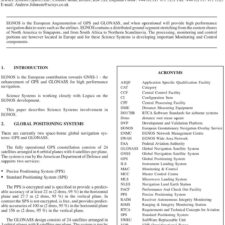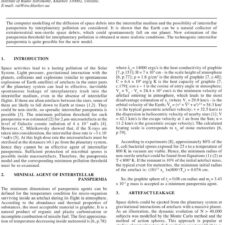A Propulsion Method For Achieving Commercial Space Travel (Part I)
£5.00
M. A. Minovitch. (1997), JBIS, 50, pp.137-148
Refcode: 1997.50.137
Abstract:
At the present Lime the most economic, technically viable method used for launching and accelerating high-mass space vehicles from the Earth ‘s surface to orbital or escape velocities is based upon rocket or jet propulsion wherein propulsive thrust is achieved by burning a gas in side pressure chambers and creating pressure differentials on the walls by expelling the gas through a system of nozzles. Unfortunately, since the required velocities are relatively high, most of the chemical energy is wasted accelerating large amounts of unburned fuel, and the inert structural mass required to contain it. The useful payload is thus a small fraction of the vehicle’s initial launch mass. This has serious technical implications in terms of pay load limitations which appear to be unavoidable.





